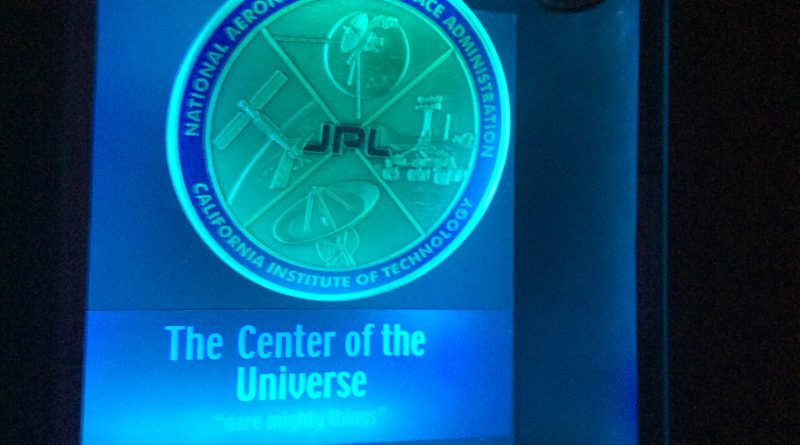JUNO: Looking Under the Clouds

On independence day weekend, I was lucky enough to be allowed to visit JPL and witness the arrival of JUNO to Jupiter. NASA is trying to get the public interested in what they do, so letting fans come and post in the social media about what they do is a win win. For more pictures on the JUNO experience or general things related to space, you can check us out on facebook at "Physics and Aerospace are Awesome".
The JPL tour was amazing. The rover featured in the Martian was there, and many spacecraft models. They gave us the opportunity to visit the heart of the Deep Space Network, which is where all the data is transmitted and processed. Due to its centrality, that room has been named "The Center of the Universe", and you know that if NASA says it, it must be true.
The NASA folks also showed us NASA's eyes, a software NASA developed and that can be used by the public to see any part of the solar system, anytime. I wholeheartedly recommend it.
Of course, most of the event was spent talking about JUNO or Jupiter in one way or another. As you probably already know, JUNO is a prove sent to Jupiter to take data and see below the clouds of Jupiter with its instruments. Also, JUNO is named after a Greek Goddess who could see through the clouds that Jupiter made to misbehave and cheat unobserved. Also, remember that the Jovian moons are named after Jupiter's lovers! Yes, the analogy works on so many levels. It is a very hard environment due to all the radiation and to the fact that every maneuver needs to be done autonomously. Jupiter is so far away radio signals take 38 minutes to reach us, so if we wanted to manually tell JUNO to do something, it would take 1 hour and 16 minutes to find out about it and transmit the command back. Thus, some critical parts of the mission cannot have a human in the loop.
As interesting as it is that such a great feat of engineering was made, this is not even the most exciting part. The most exciting part, at least for me, is what will be done with the data. there are several models about solar system formation and Jupiter formation. We do not yet know exactly which one is right due to incomplete data. Finding out things like whether there is a solid core in Jupiter, more details about its composition and more information about the magnetic field, could ultimately challenge or confirm our theories about planetary formation and the history of our solar system.
Written by Roger Lascorz. Please follow us on "Physics and Aerospace are Awesome"

Stunning, full color photo book covering every east coast launch spanning 2014-2015, including the first-ever powered landing of a SpaceX Falcon 9 rocket.
More Info



